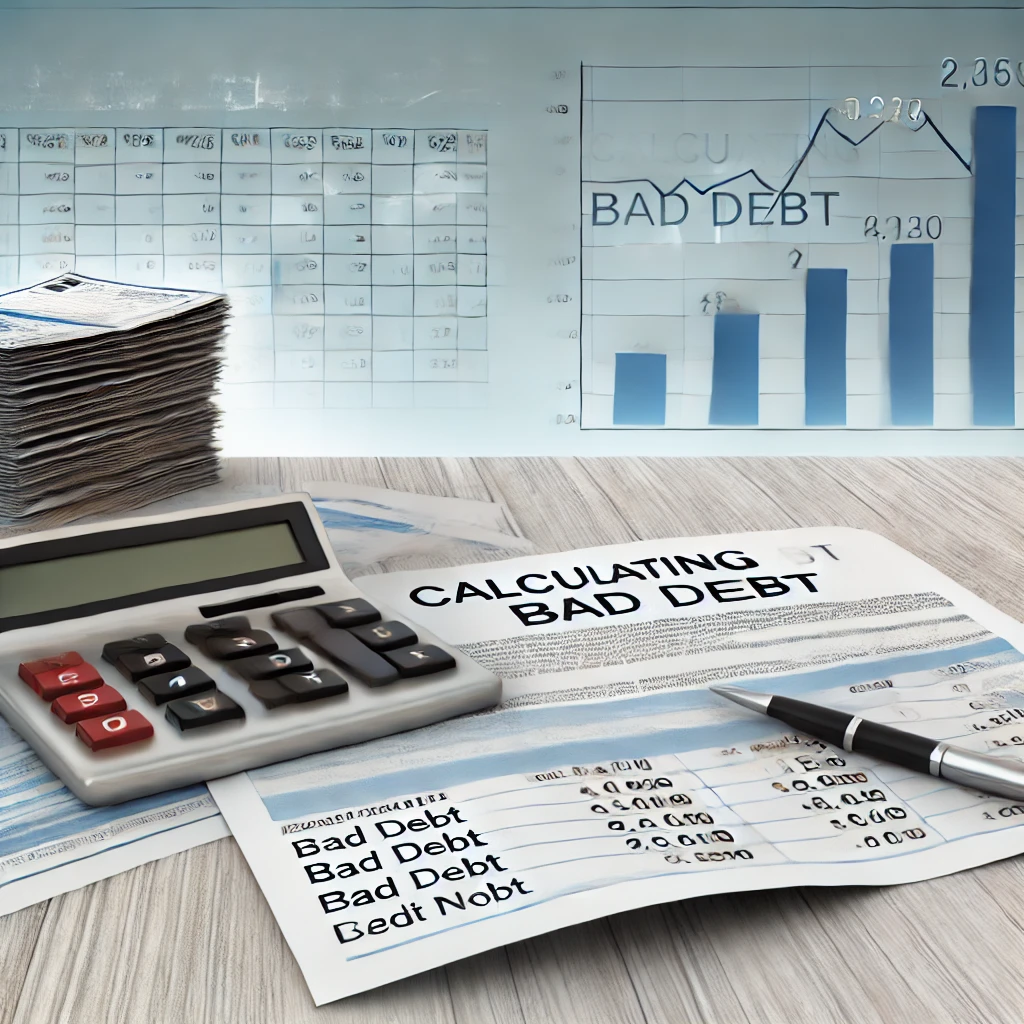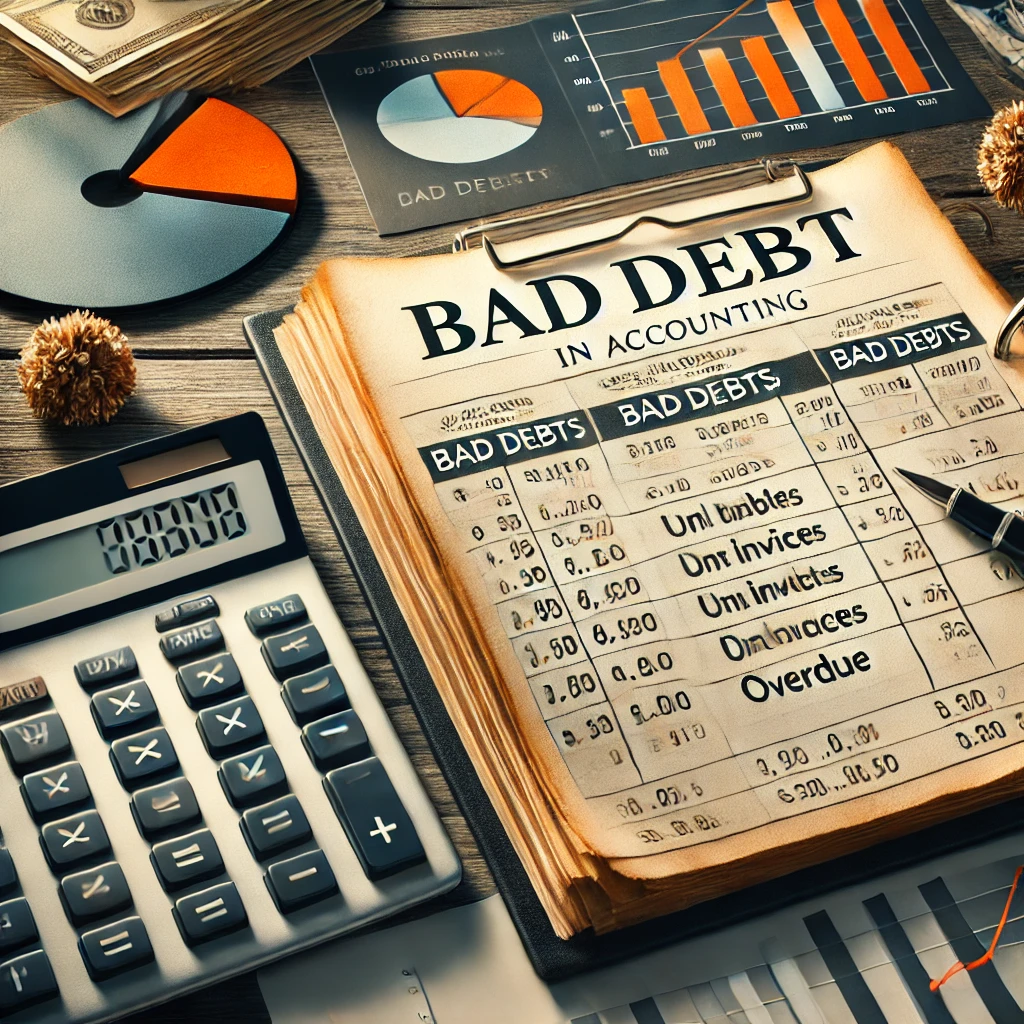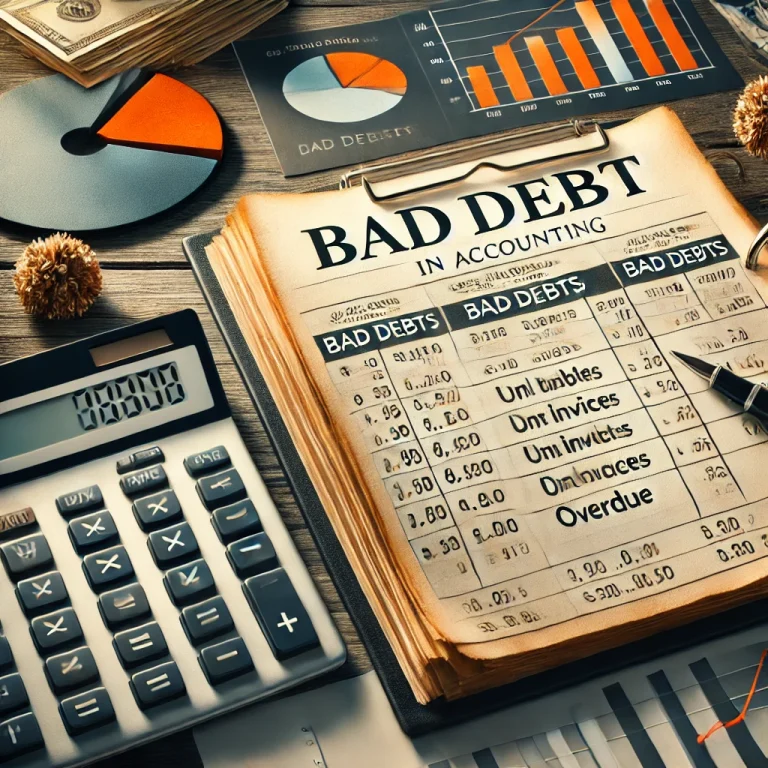Bad debt is the amount of receivable owned by a company or individual that cannot be collected from its customers or debtors. This will often occur when a customer or debtor fails to pay a bill or loan outstanding so that the debt goes uncollectible. Bad debt is also an expense account as well as a loss in the financial records of a company. This significantly affects the profitability of the company, especially if it operates on credit terms. Recognition and management of bad debt are critical in keeping financial reporting intact and preventing the overstatement of the company’s position.
Bad Debts Meaning
Bad debt is an accounting term that represents the amount of money owed to a business that cannot be recovered. After all, every business allows its customers to buy on credit, and there is always a potential list of defaulters who will not pay for the goods or services sold to them. When it is pretty obvious that the amount will never be collected, that is bad debt and taken out of the accounts. Bad debt treatment is required to present a true and fair view of an entity’s financial position. Here is a step-by-step explanation of bad debt:
- Definition: Bad debt is the amount of receivables that a business company cannot recover after making multiple attempts at collection from the customer.
- Causes for bad debts: Sometimes bad debts occur due to insolvency, disputes, or even unwillingness by the customer to pay.
- Financial Implication: It is regarded as a cost and it is disclosed in the income statement, and this decreases the profit.
- Regulation: Depending upon the used accounting framework (such as GAAP or IFRS), varying methods are adopted in accounting for bad debt.
Key Characteristics:
- The debtor is unable or unwilling to pay.
- The company has made several attempts to collect the debt without success.
- The amount is written off, reflecting a reduction in receivables.

How to Record Bad Debts
Recording bad debts adjusts the income statement and the balance sheet of the organization to reflect the true value of accounts receivable. This prevents overstated financial statements from coming out of the company.
Bad Debts Write-Off Method
The direct write-off method is one of the methods where bad debt would be recorded. According to the direct write-off method, bad debt would be recorded only if it’s confirmed that the receivable won’t be collected.
- Journal Entry:
- Debit: Bad Debt Expense
- Credit: Accounts Receivable
- Example:
If a company has an uncollectible debt of $5,000 from a customer, the journal entry would be: - Debit: Bad Debt Expense $5,000
- Credit: Accounts Receivable $5,000
Allowance Method
The direct write-off method is one of the methods where bad debt would be recorded. According to the direct write-off method, bad debt would be recorded only if it’s confirmed that the receivable won’t be collected.
- Journal Entry for Provision:
- Debit: Bad Debt Expense
- Credit: Allowance for Doubtful Accounts Later, when a debt is determined uncollectible, the journal entry is:
- Debit: Allowance for Doubtful Accounts
- Credit: Accounts Receivable
| Direct Write-Off | Allowance Method |
|---|---|
| Records bad debt after it happens | Estimates bad debt in advance |
| Less accurate representation of bad debt | More accurate, as it anticipates future losses |
| Used in small businesses | Required under GAAP and IFRS for larger firms |
Methods of Estimating Bad Debt
Most companies use either the percentage of sales method or the aging of accounts receivable method in estimating bad debts. Both of these methods are known to help the companies catch up on their respective bad debts and to get prepared for them before turning worse.
Percentage of Sales Method
It estimates bad debts as an amount that is considered over and above the credit sales. It assumes a percentage of the historical data is based on what will ultimately arise in terms of bad debt from the credit sales.
Formula:
Bad Debt Expense=Total Credit Sales×Percentage Estimated as Uncollectible
Example: If a company has $100,000 in credit sales and estimates 2% will become bad debt, the calculation would be:
100,000×0.02=2,000
The company would then record $2,000 as bad debt expense.
Aging of Accounts Receivable Method
This method is more specific because it pools receivables by how many periods they have existed. Generally, the longer a receivable has been outstanding, the less likely it will be collected. Where appropriate, percentages are applied to various age categories.
Process:
- List all receivables.
- Categorize them by age (e.g., 30 days, 60 days, 90+ days overdue).
- Apply a higher percentage of expected bad debt for older receivables.
Example:
| Age of Receivables | Amount | Estimated Uncollectible (%) | Bad Debt Estimate |
|---|---|---|---|
| 0-30 days | $50,000 | 2% | $1,000 |
| 31-60 days | $20,000 | 5% | $1,000 |
| 61-90 days | $10,000 | 10% | $1,000 |
| Over 90 days | $5,000 | 20% | $1,000 |
Total bad debt estimate: $4,000.

What Is Bad Debt in Accounting?
Bad debt, in accounting terminology, is the amount lost because part of outstanding receipts cannot be collected. It can be considered an expense and then reduces net income as well as accounts receivable appearing on the balance sheet.
Key Features:
- Accounting Treatment: Bad debt is treated as an expense. That therefore means that net income will be reduced. That is with the aim of accurate financial reporting.
- Recognition: Bad debt is recognized once it is evident that some of the debts will not be collected. That may either happen through a bankruptcy case or prolonged default.
- Effect on Financial Statements: This has an impact on both the income statement where it has added an expense and also on the balance sheet where receivable has been reduced.
Examples:
- A company sells goods worth $10,000 on credit. The customer later declares bankruptcy, making the debt uncollectible. The company writes off the $10,000 as bad debt.
- A company anticipates that 5% of its credit sales will not be collected and creates an allowance for doubtful accounts to prepare for future bad debts.
Conclusion
Undeniably, bad debt is part of the act of doing business on credit. Hence, companies must take proactive steps to estimate and record potential losses. Properly recognizing bad debt ensures that financial statements present a true view of a company’s financial health. Thus, employing methods like the direct write-off and allowance method assists businesses in managing bad debt to ensure adequate financial reporting and decision-making.
Bad Debt FAQs
What is the difference between bad debt and doubtful debt?
Bad debt is confirmed as uncollectible, while doubtful debt refers to amounts that may or may not be collected.
How does bad debt affect financial statements?
Bad debt increases expenses in the income statement and decreases accounts receivable on the balance sheet.
Can bad debt be recovered?
In some cases, bad debt may be recovered, though it’s rare. If recovered, it is recorded as income.
What is the allowance for doubtful accounts?
It’s a contra-asset account used to anticipate potential bad debts before they occur.
How do you estimate bad debts using the aging method?
Receivables are grouped by age, and a higher percentage of bad debt is applied to older receivables.


